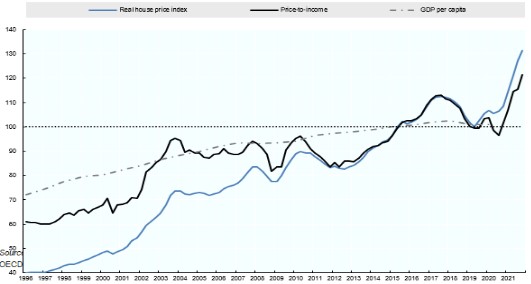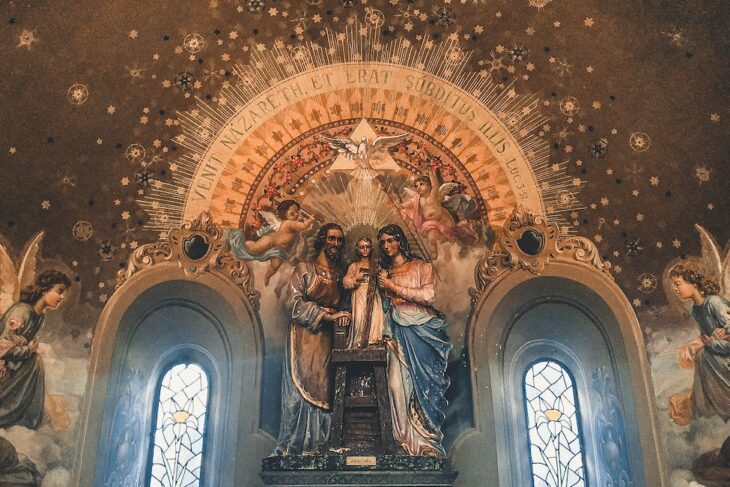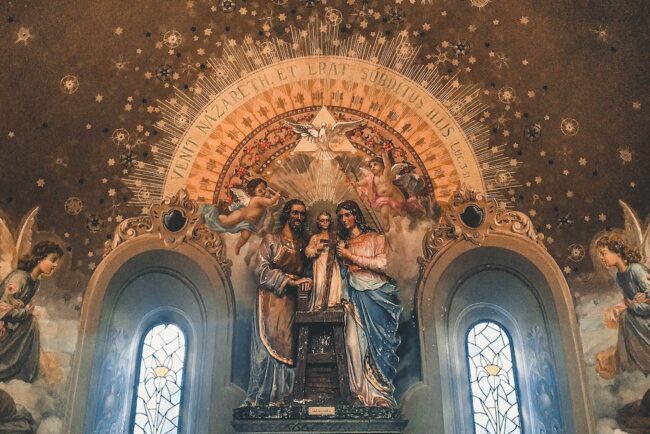by Robert Hamilton
In this essay I will be critically assessing the studies of Martin Hengel, and of Richard Horsley, on the revolutionary movements in the lead up to the first Jewish revolt. I will begin by noting their similarities, that is, where their two studies agree in their interpretation of the ancient evidence. Next, I will be analysing their divergences, within their studies, in drawing different conclusions from the source material. Lastly, I will be considering where my own interpretation of the evidence finds fault with their examination, and determinations, of the revolutionary movements leading up to the first revolt.
Both authors agree on the position of their main ancient source, Josephus, as writing for a Romanised, and thus Hellenistic, audience. Titus Flavius Josephus, born Joseph ben Matityahu, was in an extraordinary position as a first hand source, because he was actually involved in the first revolt, fighting on the side of the Jews. However, his interpretation of events does have a decidedly Roman emphasis, in many instances. In addition, both studies admit that their secondary literary sources are limited, in the main, to highly subjective accounts from the Jewish and Christian Bibles. Horsley, and Hengel, are in broad concert, with their views on the exacerbation of the situation in Judaea by the Roman authorities. The violent, and repressive, actions taken by the Roman procurators, prefects, and their armed forces ultimately stimulated a volatile situation. Both authors also share the opinion, that socially, and economically, it was a time of upheaval for the Jewish inhabitants of Palestine. Mass unemployment occurred, once building on the Temple had been completed, and more rural Jews had become peasants and tenant farmers, rather than owners of their own small plots. These circumstances led to banditry against the Romans and this taking up of arms, indirectly, would provide the Jews with rag tag armies. Hengel, and Horsley, agree that, not only the Romans, but also the Herodian, and high priestly, families were sources for social discontent, both in the city and in the country, because of their corrupt, and controlling actions, when in power.
Martin Hengel begins his study in his book, The Zealots, with an examination of Herod the first’s, influence on the emergence of this revolutionary movement. Herod was a client king of Judaea under the Romans. Hengel points out that Herod, according to Josephus, executed the Sanhedrin (Jewish Ruling Council) who, were, at that time, most probably, from the Sadducee faction. In addition he appears to have raised taxes, treated Jewish religious protocols insensitively, and appointed and dismissed seven high priests to the Temple, during his reign. Herod was seen as not a ‘true Jew’ because his family was Idumaean, and Hengel stresses Herod’s Hellenisation of cities like Jericho and Jerusalem. Hengel emphasises that both the Jewish elite, and the peasants, would have seen Herod’s rule as that of a foreign power and not as a Jewish king; and that this began to engender anti-authoritarian behaviour by sections of the Jewish community. The symbolic culmination of this anti-Herod, and anti-Roman, feeling among many sections of the Jewish population, was the attempted removal of a golden eagle from one of the main portals within the Temple. This eagle, which Herod had installed as part of the Temple, during his rebuilding of it, was symbolic of Roman power and was deeply resented by the Jewish people; forty young men died as martyrs due to their arrest, and subsequent executions, in the failed action. Herod’s removal of land from indigenous Jews, through “arbitrary justice”, according to Hengel, contributed to an increase in tenant farmers, and this was another cause of resentment among the rural section of Jewish society. The Great Famine of 25-23BC was another determinator of social instability, and gave momentum to the apocalyptic views of some eschatological Jewish leaders and groups.
Both Hengel, and Horsley, are quick to point out that the term ‘robber’, or ‘bandit’, which was often used by Josephus in his The Jewish Wars, was quite likely to be superficially used and did not investigate the underlying motives behind the actions. These robbers were often rebels engaged in anti-establishment activities, and to simply define them as criminals is seen, by both historians, to be very one dimensional. Horsley describes the levels of ‘social banditry’, especially after the famine, as enormous and that this was an ongoing problem in Jewish Palestine from the time of Herod right up to the first revolt. Both economic pressures, and the desire for Jewish political independence, fuelled these acts of banditry. Horsley does, however, label the acts of banditry as ‘pre-political’ rather than consciously revolutionary. Hengel, differs somewhat, as he includes Josephus’s account of Herod’s capture and execution of Hezekiah, the robber captain, in Galilee, as both pivotal, and as evidence that this action was as much political, as it was a policing issue. According to Hengel, Judas, the son of the robber captain Hezekiah, would later go on to gather a large body of men and capture the armoury in Sepphoris; he mentions that Josephus, in his, Antiquities, refers to Judas’s ambitions to become king. Hengel makes his boldest claim on behalf of Judas the Galilaean, and that is, that this Judas, “created an organization that persisted for two generations and was eventually successful in drawing almost the whole Jewish population into open revolt against Rome.” This claim of Hengel’s, is undeniably attractive, because it creates a dynastic subplot running through the chaotic lead up to the first revolt, and echoes the Maccabean, and other Old Testament family dynasties, which coursed through these earlier rebellions.
The first, and most fundamental, difference between Horsley and Hengel, is the dismissal by Horsley of the idea that there was a ‘Zealot movement’, which he defines as a, “supposedly long standing, organized, religiously motivated movement of national resistance to Roman domination”. Horsley stresses, that the fundamental conflict within Jewish Palestine, was between the Roman aligned Jewish elite, in the cities, and the Jewish peasants in the countryside. Within the cities, Horsley using, Josephus as his source, goes on to identify the “Fourth Philosophy, the Sicarii, and probably most of the Pharisees among the literate groups”, as sharing many of the concerns of the peasants. Horsley, states, “There is no historical relationship whatever between the Zealots proper and the Fourth Philosophy and the Sicarii, two groups which have been included in the synthetic modern scholarly concept of ‘the Zealots’.” Hengel refers to the, founding of a ‘new movement’ by Judas the Galilaean, and Horsley, would discount this as a synthetic modern scholarly concept.
Hengel, then makes a supposition, which rests more on wishful thinking than clear evidence; he claims that Judas the Galilaean is Judas b. Hezekiah, because they perform similar actions and that Judas was referred to as a, “ ‘scribe who leads the people astray’, meaning that he was a man of the law, of the Torah.” Hengel, really, wants us to believe in this dynastic subplot, linking the various players in the Jewish revolt to one family. Menahem, who briefly leads the revolt in Jerusalem, in 66AD, is declared by Hengel to be the son of Judas the Galilaean who is Judas b. Hezekiah. Many writers want some neat pattern to be at the heart of their story and Hengel wants a family dynasty to be underpinning the wildly chaotic Jewish revolt. The number of characters, within this section of Jewish history, who have the same, or similar names – Judas; Simon; Eleazar is noteworthy.
Martin Hengel, continues, to sew together disparate strands of evidence into a more grandiose quilt of Jewish history, with statements like these: “This son of Judas the Galilaean is one of the key figures in any attempt to understand the Zealot movement… He was probably not only the leader of one of the many ‘robber bands’ that were in control of the open country, but also the head of the Zealot movement in the whole of the country.” Hengel knows, that every good story needs a strong central character at the centre of it, and so he creates one. In contrast to Hengel, Richard Horsley stresses: “the extreme diversity of forms of social unrest among Palestinian Jews at the time”, and sees no one Zealot movement and no one Zealot leader. Hengel goes on, to claim that the prime reason for the failure of the rebellion was the death of Menahem, and the loss of his leadership to the Zealot movement, which historically united them by its dynastic authority. Horsley, in his book, Galilee, refers to the situation of Galilee, the city, not being under the control of the Temple in Jerusalem for the “final seventy years of the second temple era”, which again conveys the disparate nature of the Jewish situation in Palestine. Horsley goes on, to make clear, that there was no united Jewish state, with cities like Tiberias, and Gischala, all holding different positions in regard to the Romans, and to Jerusalem. Galilee, in the first century AD, is often associated in the literature of modern historians, like Hengel, with a more revolutionary bent than Judaea, but the factual basis behind this is disputed by other historians, like Horsley, and Sean Freyne.
Richard Horsley, in his study, points toward the rich Jewish history containing prophets, like Moses, Joshua, and Elijah, who led their peoples in open defiance of foreign, and domestic, powers. He does this to explain the number of messianic, and oracular, leaders and groups, who were active in the lead up to the first revolt. The Old Testament gave traditional approval to the Jewish resistance of foreign occupation. Horsley sees the oracular, and messianic, leaders, as much more politically aware, and that they, and their groups, were taking action to change the political landscape. Horsley mentions the Qumranites as an example of a sectarian group, who were expecting a new world order, and a return to a ‘covenantal society’. Horsley, in his study, is keen to define the different groups, which made up the revolutionary movement into, at least, three distinct categories: oracular groups with prophetic leaders; messianic groups with kingly leaders; and city based Pharisee, and intellectual groups, like the Sicarii.
Horsley differentiates the Sicarii from the Jewish peasant groups, seeing them as being led by intellectuals, who according to Horsley, “reflectively and deliberately formulated a long range strategy”. I see them as terrorists, carrying out acts of calculated terror on influential members of the Jewish elite. Horsley contrasts the violence, perpetuated by the Sicarii, with the basically non-violent policies of the Pharisees, and then tellingly states their fate at Masada. Horsley speculates, that the Sicarii may have been isolated, from all the other groups during the fully fledged revolt, because they did not share their messianic beliefs, and that this is why they removed themselves to Masada. Interestingly, he suggests, the Sicarii may have been the most politically aware group and their decision to commit mass suicide, was because they were under no illusions as to the outcome of war with the formidable Romans. Martin Hengel sees the Sicarii, as actually being another name for the Zealots, and that they were called so by the Romans, in response to their murderous behaviour with concealed daggers. With a paucity of ancient sources available to both historians, and to others, like Sean Freyne, Hengel and Horsley, often base their conclusions on the interpretations of a particular ancient Greek terms, employed within the New Testament, or by Josephus, and personally, without a solid knowledge of that language myself, I find it difficult to judge their correctness.
The Zealots, the actual Zealots, were formed during the fight against the Romans in 67-68AD, in Horsley’s view. In Jerusalem, the Zealots effectively challenged the Jewish elite, high priestly controlled group and organised “commoners to be selected by lot for the high offices.” Horsley is adamant, that the Zealots did not exist before the eruption of the first revolt, and in this he differs markedly with Martin Hengel’s view about the formation of the Jewish freedom movement. Sean Freyne in his book, Galilee, draws attention to this alternative view of the Zealots, which Horsley is so definitive upon. Horsley’s study, also seeks, to reinterpret the view of the zealots, with Jesus of Nazareth, firmly in mind, although, in Horsley’s view, the zealots did not form until some forty five years after the crucifixion of Jesus. Horsley wishes to discount the view of Jesus as a political leader and place him as an oracular leader. Jesus, as an historical figure, plays a much more defining role in Richard Horsley’s study, than in Hengels. This is clearly indicated by his subtitle, “Popular Movements in the time of Jesus”, it is almost as if the presence of Jesus Christ is needed to elicit the reader’s interest.
In conclusion, I would posit that Martin Hengel’s study, The Zealots, is far more thorough and detailed, in its examination of the revolutionary movements in Jewish Palestine, in the lead up to the first revolt. However, it seeks to interpret the evidence as justification of Hengel’s own theory, that there was a familial dynasty, at the heart of the zealot movement, through the Hezekiah line. This overreaching, scenario, is in my view, a major flaw in his study, and seeks to idealise this volatile period of second temple time into a historically neat fitting pattern. The dynastic claim rests, in part, on modern interpretations of ancient Greek, and Hebrew, words, used within the ancient sources, and these ‘meanings’ are open to speculation. The expression, ‘most probably’, is frequently used in this translation of Hengel’s, The Zealots. Richard Horsley, in contrast, counters that the Zealot movement did not begin until 67-68AD in Jerusalem, during the actual revolt itself, but perhaps this is merely a case of semantics, involving the term ‘Zealots’. Horsley, is, less specific in the detail of his study into these revolutionary movements but offers a more diverse picture of the situation; though like all historians he loves to label groups and categorise them according to his modern interpretations. For Horsley, it is a matter of city folk versus the peasants, which echoes socialist revolutions in modern China and Russia. Horsley, also, illuminates his study with the, overly influential, presence of Jesus Christ; who may, just be, his story’s leading character, despite the fact of his premature demise before the actual eruption of the revolt. Both studies do shine a light on a fascinating time in history and portray a microcosm of human society dealing with social upheavals, which challenged their religious and political beliefs. The amount of banditry is continually remarked upon, and this in itself, says much about the feisty spirit of a people, who were being savagely repressed by a totalitarian foreign power. The fact, that many of our essential religious beliefs have emerged from this microcosm, makes it very worthy of our analysis today.
©Robert Hamilton
BIBLIOGRAPHY
Berlin, Andrea, M, “Jewish Life before the Revolt”, Journal for the Study of Judaism, 36, 2005, p – 417-470.
Flavius Josephus. The Works of Flavius Josephus. Translated by. William Whiston, A.M. Auburn and Buffalo. John E. Beardsley. 1895. www.perseus.tufts.edu
Freyne, Sean, Galilee – From Alexander the Great to Hadrian, T & T Clark, Edinburgh, 1980.
Goodman, Martin, Ruling Class of Judaea – The Origins of the Jewish Revolt Against Rome AD66-70, Cambridge University Press, Cambridge, 1987.
Hengel, Martin, The Zealots – Investigations into the Jewish Freedom Movement in the Period from Herod I Until 70AD, (trans – David Smith), T & T Clark, Edinburgh, 1989.
Holy Bible – New International Version, Zondervan Corp, International Bible Society, Colorado Springs, 1996.
Horsley, Richard, A, Bandits, Prophets and Messiahs – Popular movements in the times of Jesus, Harper & Row, San Francisco, 1988.
Horsley, Richard, A, Galilee – History, Politics, People, Trinity Press International, Pennsylvania, 1995.
Meyers, Eric, M, Galilee through the Centuries – Confluence of Cultures, Eisenbrauns, Indiana, 1999.
Neusner, Jacob; Borgen, Perder; Horsley, Richard, A; Frerichs, Ernest, S, Editors, The Social World of Formative Christianity and Judaism, Fortress Press, Philadelphia, 1988.
Vermes, Geza, The Complete Dead Sea Scrolls in English, Penguin Classics, Rev Ed, London, 2004.












